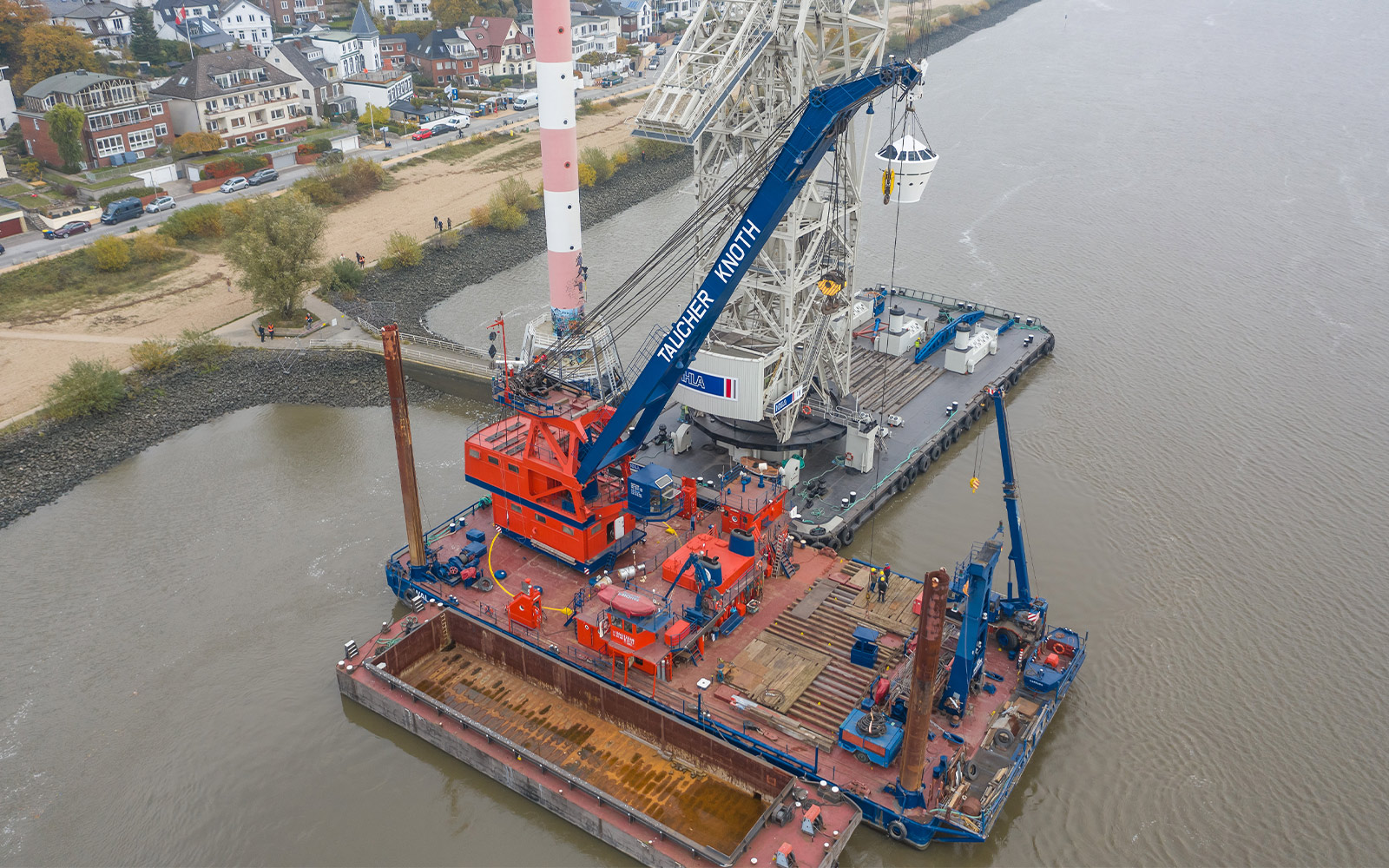
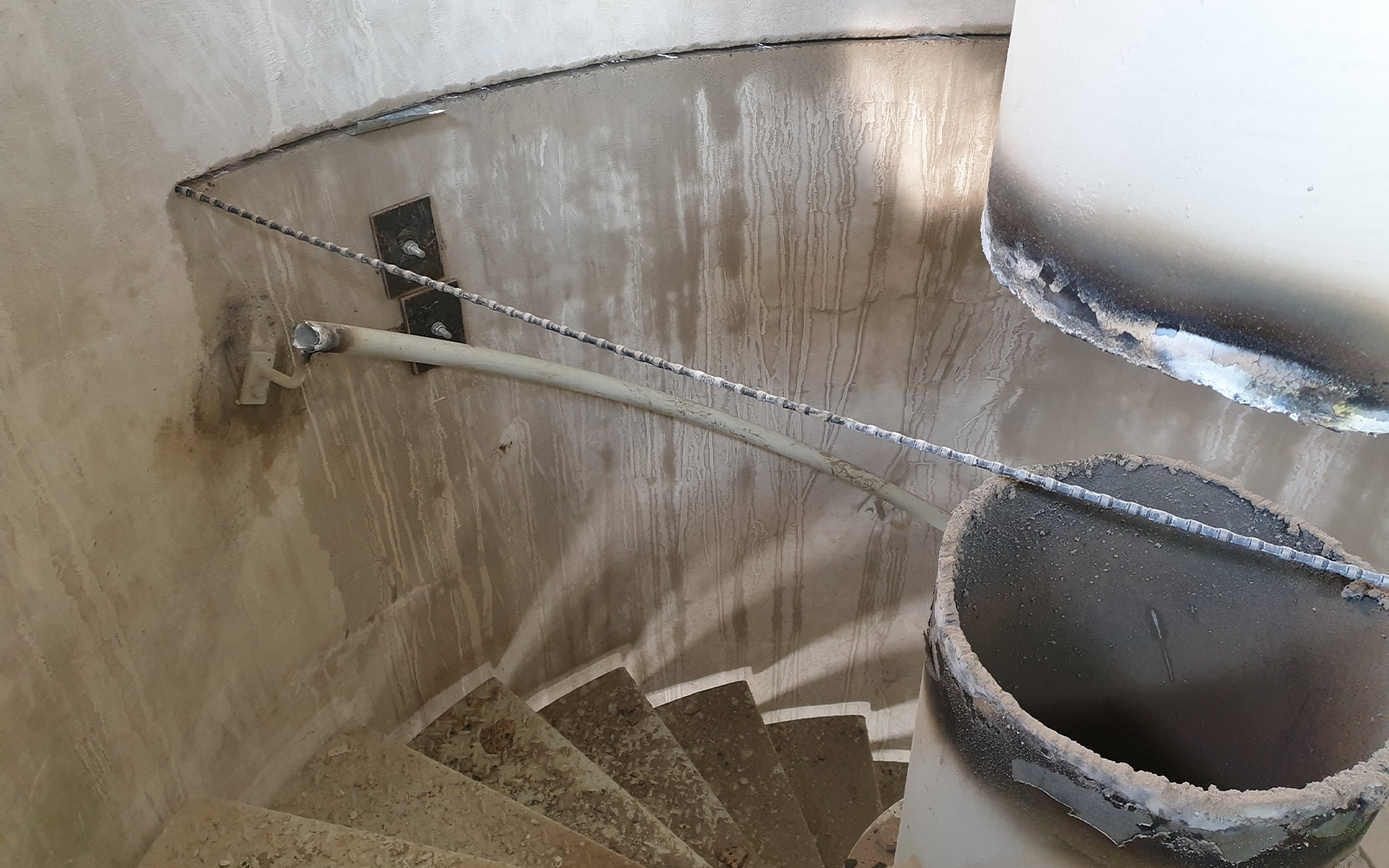
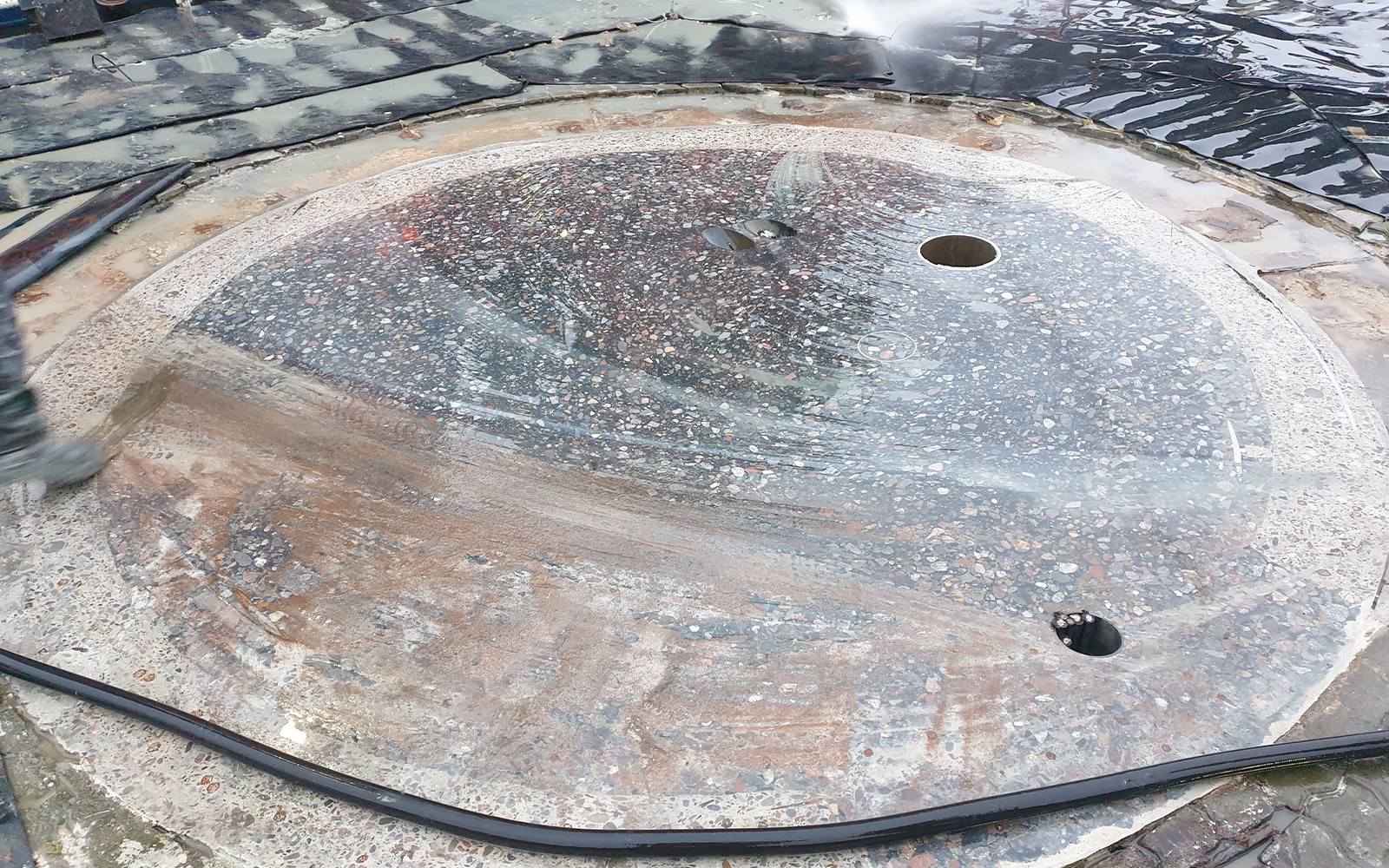
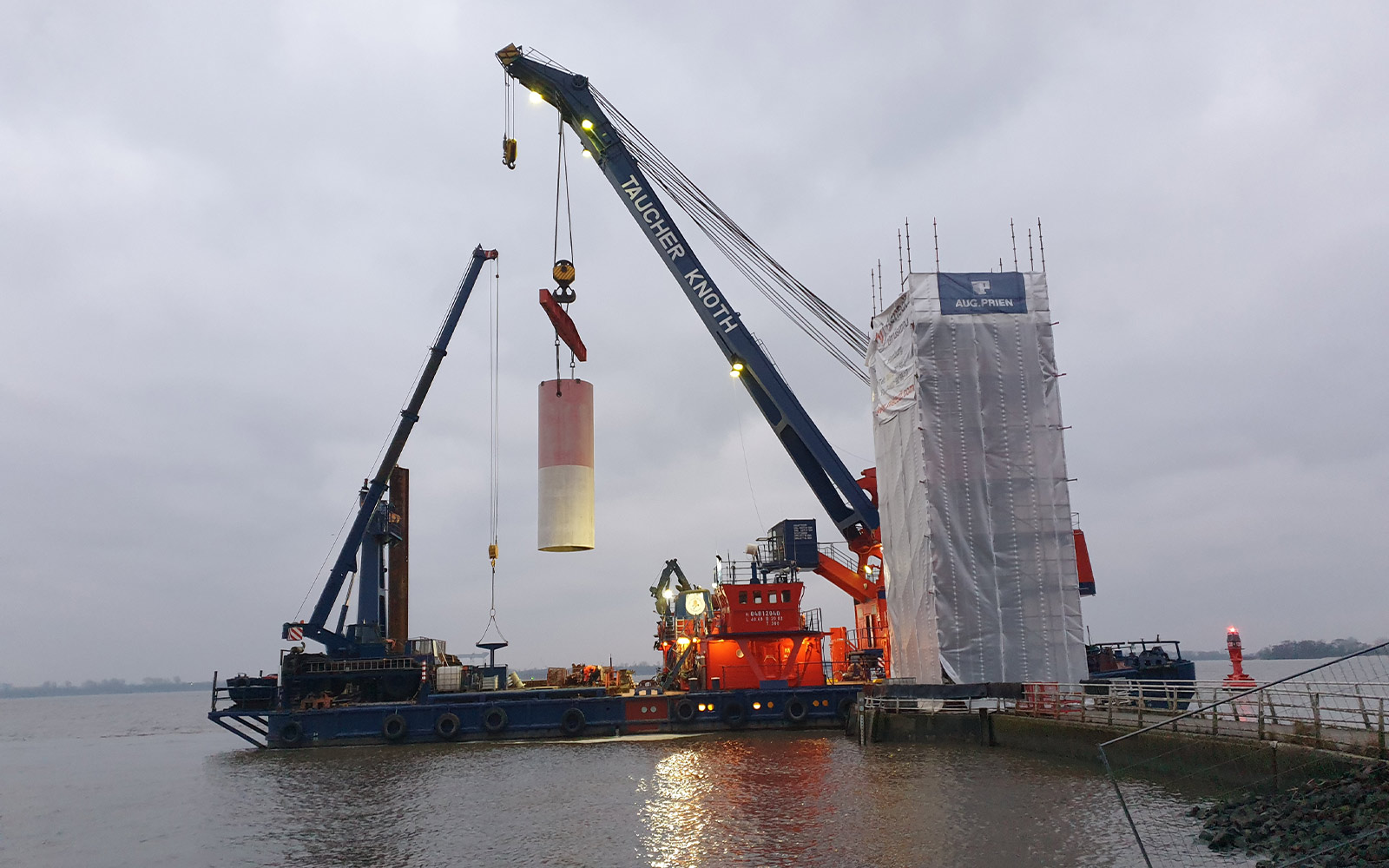
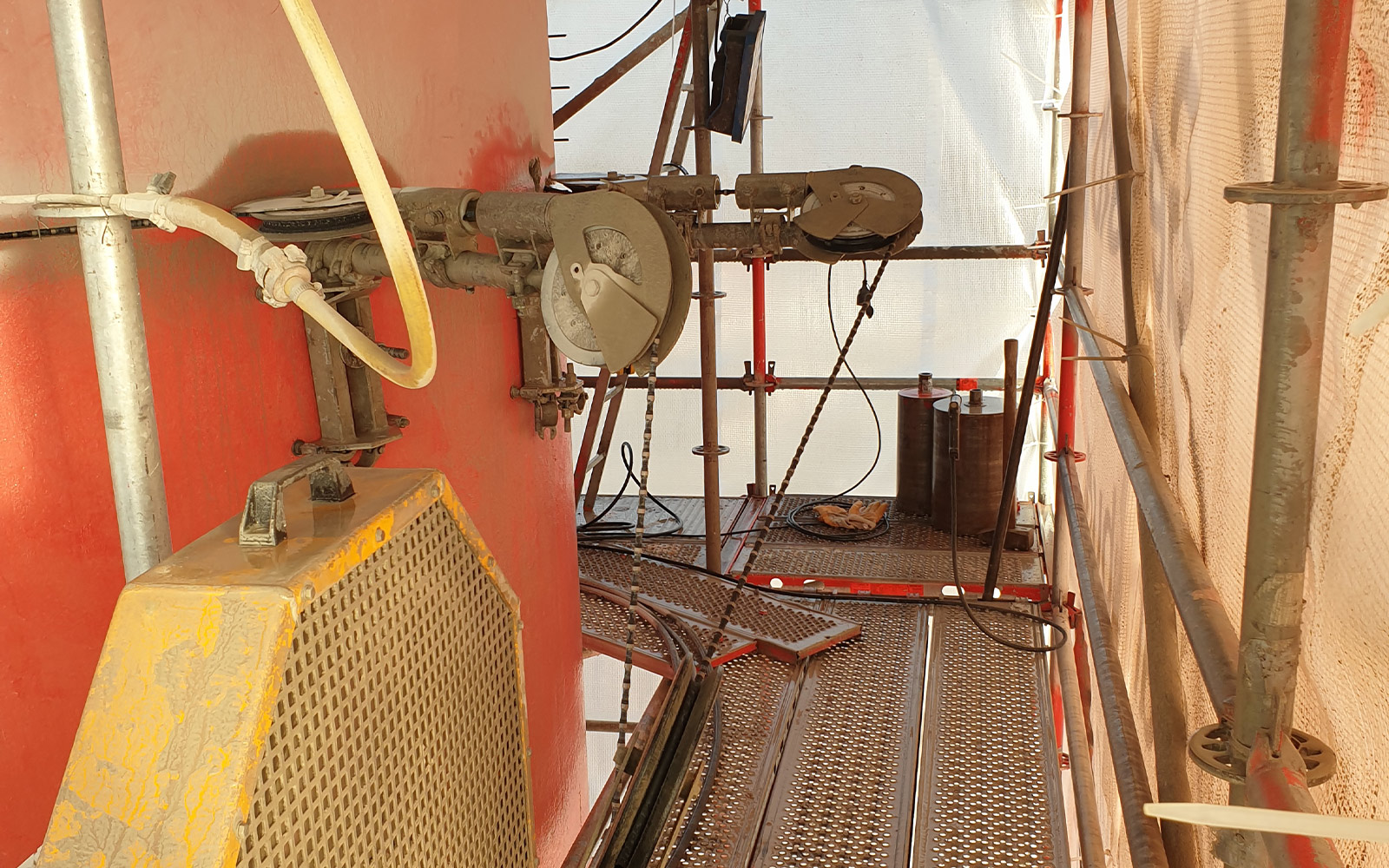
LISSMAC diamond tool cuts lighthouse into manageable segments for the crane
avril 22, 2021
Lighthouses are bastions against the forces of nature and seem made to stand forever. Yet even the ships’ mighty signal-bearers must yield to progress. That was the fate of the Blankenese Low Lighthouse. Due to the widening of the navigation channel in the river Elbe, the 1984 construction suddenly found itself outside of the leading line. The industrial diving company Taucher Knoth (Nachf.) GmbH & Co. KG took on the 231 t heavy dismantling order.
The once towering 42 m high Blankenese Low Lighthouse was set on a massive concrete foundation in a heavily frequented part of the Elbe river. Simply felling the tower like a tree and letting it fall, or just blowing it up, was out of the question because of the sensitive site. Instead of these aggressive methods, it was decided to dismantle the tower segment by segment. A job for professionals, taken up by Taucher Knoth in collaboration with AUG. PRIEN Bauunternehmung (GmbH & Co. KG)’s concrete laboratory.
For the undertaking, in the truest sense of a “lighthouse project” for all involved, the specialists from the AUG. PRIEN concrete laboratory fitted their rope saw with a 20 m BDSP 3 diamond wire by LISSMAC. “The BDSP 3 is a diamond wire for extremely high material hardnesses. This tool, equipped with 40 pearls per metre, is the guarantee of the very best cutting performance and a good service life even in heavily steel-reinforced concrete. Particularly in demanding projects like this one in which tool failure would be disastrous, the BDSP 3 is the number one choice and provides the necessary reliability,” says Dirk Klindtwort, area sales manager at LISSMAC.
42 m total height, 3 m shaft diameter and around 20 cm thick heavily steel-reinforced concrete walls brought the total weight of the lighthouse to a colossal 231 t. Too heavy to hoist. Taucher Knoth and AUG. PRIEN opted for the intelligent division of the shaft. The longest segment measured 13 m with a weight of 56 t; the 96 t concrete-filled base was just moveable by the crane rope of Taucher Knoth’s TK 10 floating crane “Whale” which can deal with up to 110 t in one go. “The sawing of the massive concrete tower base was by far the hardest work, and was an acid test for the tool. Nine hours long, the BDSP 3 diamond wire ate through seven square metres of cutting area. The cross-section, as smooth as glass and exactly at ground level, is witness to the skill of the AUG. PRIEN professionals,” remarks Klindtwort.